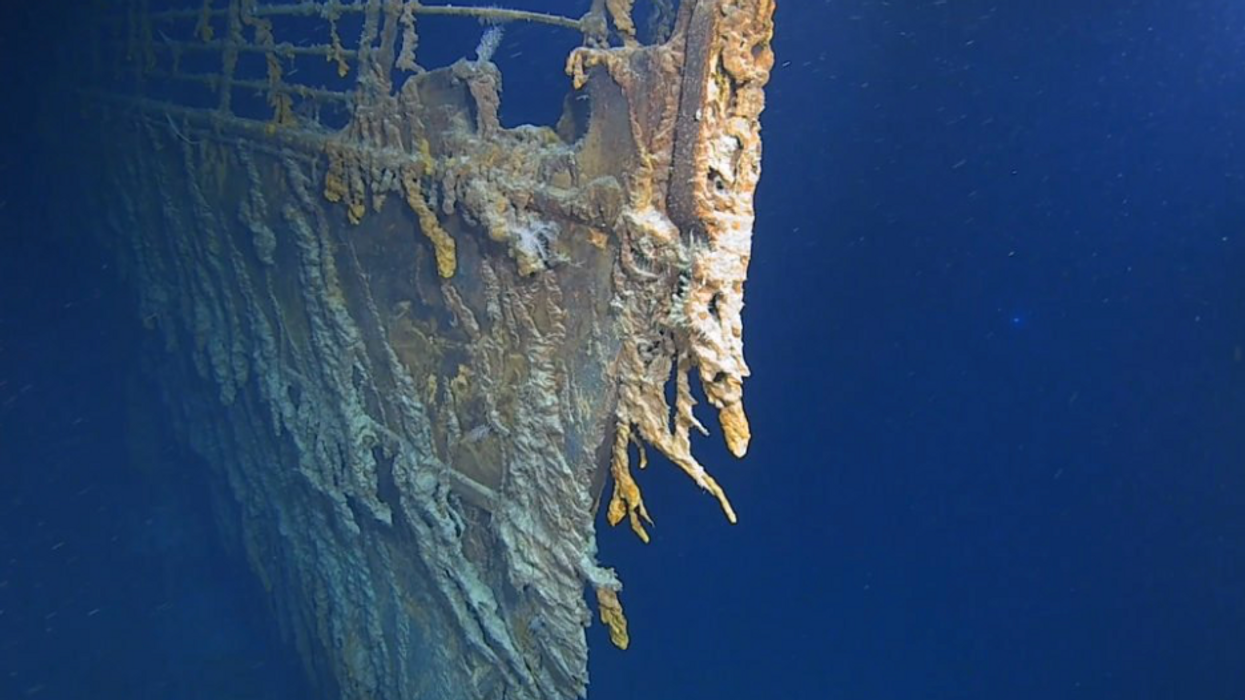You Won't Believe These 4K Images of Titanic
A dive team's first visit to the wreck in 14 years is unlike anything you have ever seen.

James Cameron's Titanic was released 22 years ago, but the original shipwreck itself passed the century mark of being at the bottom of the Atlantic, shattered in pieces. Since it was discovered by Bob Ballard in 1985, there have been hundreds of visits to the wreck via deep-sea submersible to document its deterioration over time as it is slowly consumed by iron eating bacteria. But the first visit to the wreck in 14 years by Atlantic Productions, brought with it 4K cameras, that show the wreck's disintegration is picking up speed, and in marvelous detail.
As the shipwreck continues to deteriorate, it represents both a historic and biological opportunity for scientists to document its decline. The wreck lies in 12,500 feet of water, about 370 miles off the coast of Newfoundland, Canada. The temperature is about one degree, and the conditions are ripe for bacteria that have developed a voracious appetite for the wrecked vessel's iron hull. The results are well known, as "rusticles" can be clearly seen in just about every image since the wreck was discovered.
But not only is bacteria causing the rapid decline of the wreck, as both salt corrosion and sweeping eddies from the ocean's ever-changing sea currents, creates a kind of vortex that is accelerating the ship's overall decline.
"These assets will help assess the wreck's current condition and project its future, as well as making it possible to visualize the wreck using augmented reality and virtual reality technology," according to a statement from Triton Submarines.
The 4K images were shot by Atlantic Productions, under the supervision of the National Oceanic and Atmospheric Agency (NOAA) as part of an upcoming documentary for the BBC. The clips shared on Twitter show how the ship is beginning to collapse in on itself, Already the Captain's quarters have disappeared, and the popular bathtub that would often be seen by visitors of the wreck has completely been devoured. Meanwhile, other parts of the ship remain in remarkable condition, at least for the time being.

The images were captured by cameras specially adapted to withstand the crushing forces at the depth the wreck sits. But Atlantic Productions not only went down to create the 4k video to show the wreck's deterioration but to also preserve it in Virtual Reality.
Using a technique known as "Photo Grammatery," the production used the deep-sea submersibles to fly up and down the wreck, taking tens of thousands of digital images, which will then be combined to create a high-resolution 3D image of the Titanic.
Photo Grammetry is a process where a subject is imaged at all angles and depths using hundreds, and in this case, thousands of images to capture the subject in its fullest detail. The images are then stitched together using a computer to create a virtual three-dimensional image. Once the ship has been preserved virtually, it can be used by scientists and historians for decades to come to create virtual models to study the wreck, as well as 3D print things in perfect detail. This will enable researchers to project the speed of Titanic's future deterioration.
Historians and Titanic aficionados will also be able to visit the Titanic in virtual reality, protecting it from further damage. And who knows? Maybe we'll get a special virtual edition from Cameron after he goes back to Pandora for the Avatar sequels.
Source: FStoppers










![Ethos, Pathos, Logos: 20 Effective Ways to Advertise [Infographic]](https://nofilmschool.com/media-library/ethos-pathos-logos-20-effective-ways-to-advertise-infographic.jpg?id=34064614&width=600&height=600&quality=90&coordinates=560%2C0%2C0%2C0)

